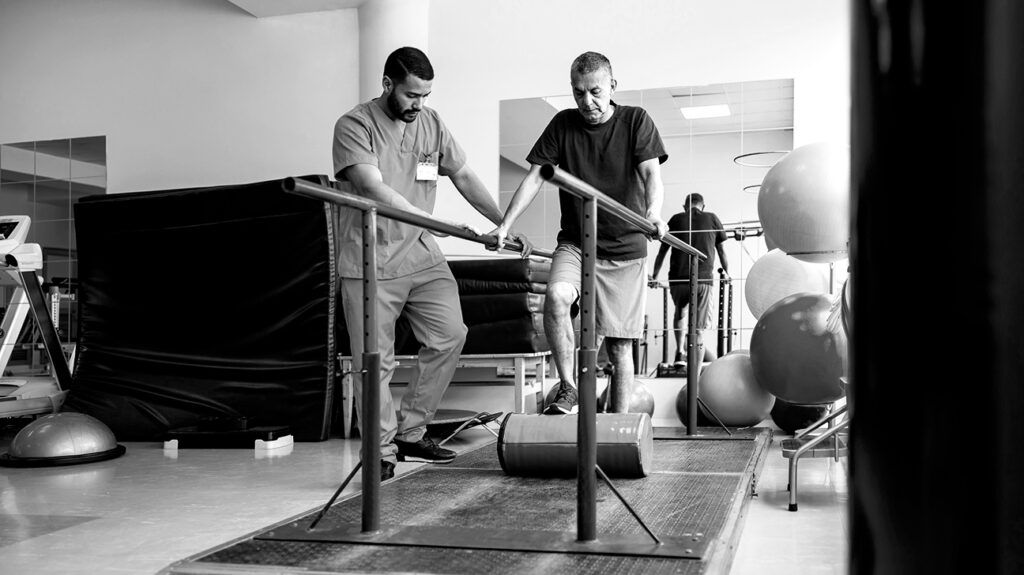Stroke rehabilitation helps stroke survivors regain independence following a stroke. It may include physical therapy, speech therapy, or occupational therapy.
The timescale for stroke rehabilitation differs from person to person and may take weeks, months, or even years. While some people recover fully, others may experience lifelong challenges.
This article outlines some common changes resulting from a stroke and the purpose of stroke rehabilitation. It also offers information on support for caregivers.

According to the
After around 3 months, a person’s brain neuroplasticity returns to a typical level. At this point, recovery is still possible, but progress will be slower.
Stroke rehabilitation
- a hospital inpatient rehabilitation unit
- a subacute care unit
- a long-term care facility offering rehabilitation therapy and specialist nursing care
- a specialist rehabilitation hospital offering individualized inpatient therapy
- at home involving outpatient care
Stroke rehabilitation is a program of therapies that helps a person recover from a stroke and regain as much independence as possible.
According to the
Therapists will conduct assessments to determine a person’s rehabilitation needs following a stroke.
Stroke rehabilitation typically includes the approaches below.
Physical therapy
Physical therapy aims to improve a person’s movement, address any pain, and help prevent further physical problems from occurring.
A physical therapist will help a person relearn simple motor activities, such as moving from the bed to a chair, walking, and lying down.
They can also fit people with braces, if necessary, and teach them how to use mobility devices such as wheelchairs, canes, or walkers.
A physical therapist will recommend the types of exercises to do and how often to get stronger. As a person regains strength, these exercises may feel easier, and a physical therapist can introduce new challenges and exercises.
Speech therapy
A speech therapist helps people improve their communication following a stroke.
People may experience the following communication problems:
- Aphasia: This refers to difficulties with coordinating and understanding speech. Its symptoms vary widely, and it affects around
one-third of stroke survivors. - Dysarthia: This involves problems controlling the muscles in the face, mouth, and throat, leading to slurred, slow, or quiet speech.
- Apraxia of speech: This occurs when a person cannot move their muscles in the correct order to produce speech as usual.
A speech therapist may teach compensation or coping strategies, such as using gestures or electronic devices, to help people express themselves following a stroke.
Speech therapy usually begins in the hospital and continues once a person is back home. To make improvements, people can practice communicating as much as possible.
Occupational therapy
Occupational therapy helps people regain the skills they need to function independently in daily life. An occupational therapist can:
- share strategies for completing daily tasks, such as cooking, showering, and other domestic tasks
- adapt daily activities to make them easier
- provide aids and equipment to help with daily tasks
- advise about changes to a person’s home or workspace that may help them function independently
- teach carers how best to support a person following a stroke
An occupational therapist can help someone gain confidence in the activities that are important in their lives. With practice, tasks will likely feel easier, and a person can take on new challenges.
Read about the stages of stroke recovery.
The British Heart Foundation offers the following tips for people recovering from stroke:
- Gradually building strength: This involves gradually increasing the limits of what feels comfortable in terms of exercise and activity without overdoing it. Individuals also need to take care in setting their own goals and avoid comparing themselves to others.
- Focusing on progress: Stroke rehabilitation can be a lengthy and challenging process. People must focus on and celebrate small, incremental improvements, which will help with motivation and overall recovery.
- Reaching out for support: People need to invest time and effort into their recovery. Wherever possible, a person can ask family and friends for help with everyday tasks while they recover.
According to the ASA,
- managing high blood pressure
- maintaining healthy cholesterol levels
- controlling their blood sugar
- keeping active
- eating healthily
- maintaining a moderate weight
- quitting smoking or vaping
The
Being a caregiver for a person who has experienced a stroke can be physically and emotionally challenging. The
Stroke Family Warmline: A service that connects stroke survivors and their caregivers with an ASA team member who can offer support and helpful information.Stroke Support Group Finder: A search tool that enables stroke survivors and their caregivers to connect with people with similar experiences.Support Network: An online platform where stroke survivors and their caregivers can post and respond to stroke-related topics.
Read about the long-term effects of stroke.
Stroke rehabilitation is a program of therapies that aims to help people regain their independence following a stroke. Depending on their needs, it may involve physical, speech, psychological, and occupational therapy.
People typically begin stroke rehabilitation in the hospital within a couple of days of having a stroke. It may continue in a specialist rehabilitation center, or a rehabilitation therapist may visit a person’s home.
Factors that can help rehabilitation include building strength gradually, focusing on progress, and having support from family, friends, and specialist stroke support networks.
